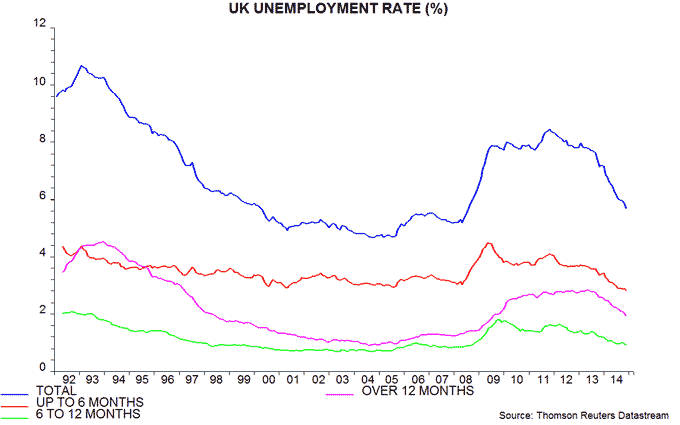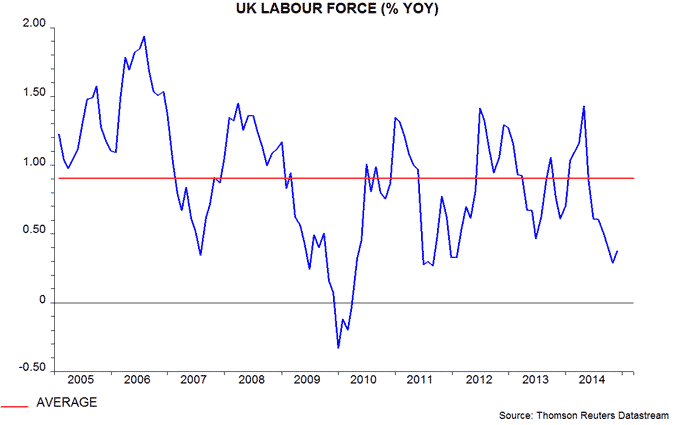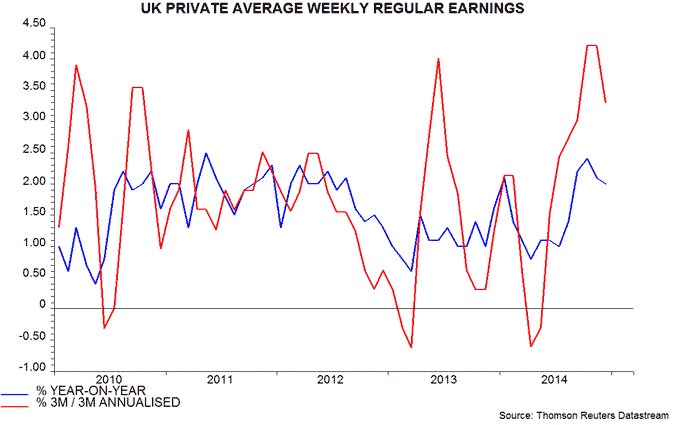UK productivity stagnation extends
Inflationary risks from the UK labour market continue to increase. Today’s statistics show a further decline in labour availability, continued poor productivity performance and rising wage pressures.
The unemployment rate fell to 5.7% over October-December, the lowest since 2008 and down from 7.9% at the time of the last general election in May 2010. The short-term unemployment rate, measuring those out of work for six months or less, dropped to 2.8%, the lowest on record in data extending back to 1992 – see first chart. 
The more timely claimant count, meanwhile, dropped by a whopping 39k in January, suggesting that the overall unemployment rate will maintain its recent pace of decline of about 0.1 percentage point per month – the Bank of England, by contrast, expects a slower fall.
The implication of a growing labour shortage is supported by a further rise in the stock of unfilled vacancies to a record in data back to 2001.
The Bank of England last year claimed that rapid labour supply expansion would head off a shortage of workers. The labour force, however, expanded by only 0.4% in the year to the fourth quarter, well below the average annual growth rate of 0.9% since 2005 – second chart.
Bonus payments pushed up the annual growth rate of average weekly earnings to 2.4% in December but regular pay expansion eased back to 1.6% from 1.7% in November. Private regular earnings, however, increased at a 3.3% annualised rate between the third and fourth quarters, suggesting a pick-up in annual growth in early 2015 – third chart.
Productivity performance, meanwhile, remains dismal. Aggregate hours worked in the economy rose by 0.8% between the third and fourth quarters, exceeding the currently-estimated 0.5% rise in GDP. Flat productivity and a slow labour force rise suggest that trend GDP expansion is much weaker than implied by the Bank of England’s rosy forecast of strong medium-term growth coupled with sustained low inflation.

Reader Comments